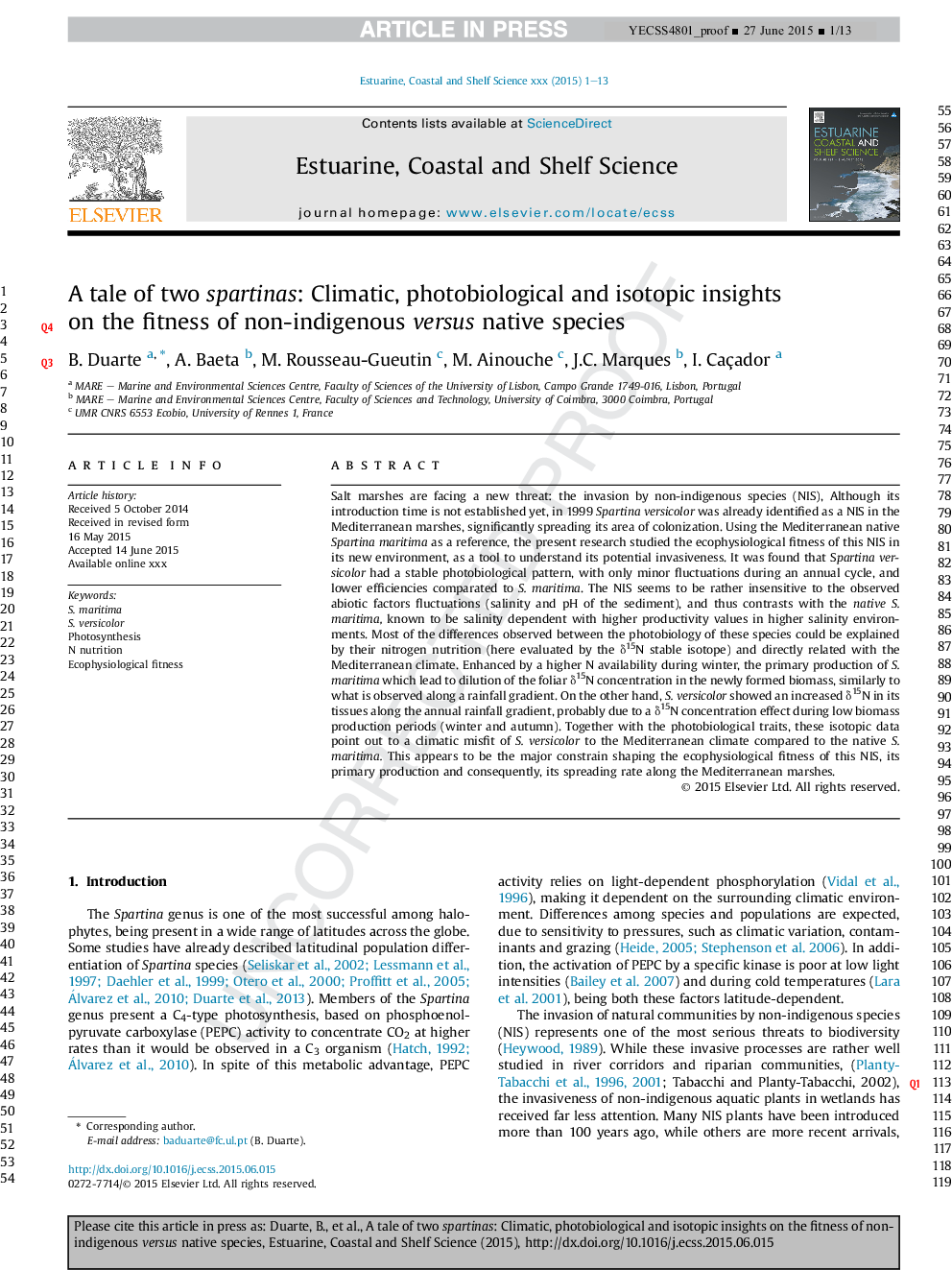| کد مقاله | کد نشریه | سال انتشار | مقاله انگلیسی | نسخه تمام متن |
|---|---|---|---|---|
| 6384575 | 1326595 | 2015 | 13 صفحه PDF | دانلود رایگان |
عنوان انگلیسی مقاله ISI
A tale of two spartinas: Climatic, photobiological and isotopic insights on the fitness of non-indigenous versus native species
ترجمه فارسی عنوان
داستان دو اسپارتینا: بینش های محیطی، فتو بیولوژیکی و ایزوتوپ در مورد تناسب گونه های غیر بومی در مقابل بومی
دانلود مقاله + سفارش ترجمه
دانلود مقاله ISI انگلیسی
رایگان برای ایرانیان
کلمات کلیدی
موضوعات مرتبط
مهندسی و علوم پایه
علوم زمین و سیارات
زمین شناسی
چکیده انگلیسی
Salt marshes are facing a new threat: the invasion by non-indigenous species (NIS), Although its introduction time is not established yet, in 1999 Spartina versicolor was already identified as a NIS in the Mediterranean marshes, significantly spreading its area of colonization. Using the Mediterranean native Spartina maritima as a reference, the present research studied the ecophysiological fitness of this NIS in its new environment, as a tool to understand its potential invasiveness. It was found that Spartina versicolor had a stable photobiological pattern, with only minor fluctuations during an annual cycle, and lower efficiencies comparated to S. maritima. The NIS seems to be rather insensitive to the observed abiotic factors fluctuations (salinity and pH of the sediment), and thus contrasts with the native S. maritima, known to be salinity dependent with higher productivity values in higher salinity environments. Most of the differences observed between the photobiology of these species could be explained by their nitrogen nutrition (here evaluated by the δ15N stable isotope) and directly related with the Mediterranean climate. Enhanced by a higher N availability during winter, the primary production of S. maritima which lead to dilution of the foliar δ15N concentration in the newly formed biomass, similarly to what is observed along a rainfall gradient. On the other hand, S. versicolor showed an increased δ15N in its tissues along the annual rainfall gradient, probably due to a δ15N concentration effect during low biomass production periods (winter and autumn). Together with the photobiological traits, these isotopic data point out to a climatic misfit of S. versicolor to the Mediterranean climate compared to the native S. maritima. This appears to be the major constrain shaping the ecophysiological fitness of this NIS, its primary production and consequently, its spreading rate along the Mediterranean marshes.
ناشر
Database: Elsevier - ScienceDirect (ساینس دایرکت)
Journal: Estuarine, Coastal and Shelf Science - Volume 167, Part A, 20 December 2015, Pages 178-190
Journal: Estuarine, Coastal and Shelf Science - Volume 167, Part A, 20 December 2015, Pages 178-190
نویسندگان
B. Duarte, A. Baeta, M. Rousseau-Gueutin, M. Ainouche, J.C. Marques, I. Caçador,
